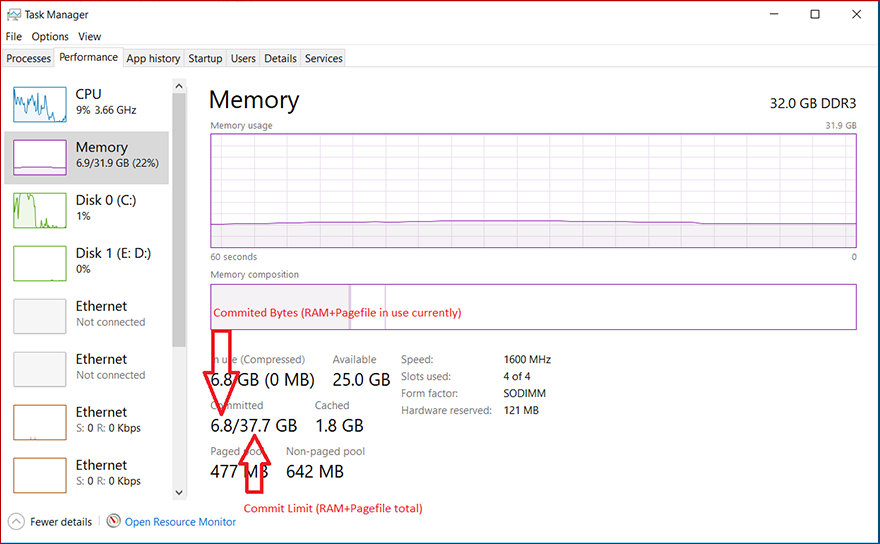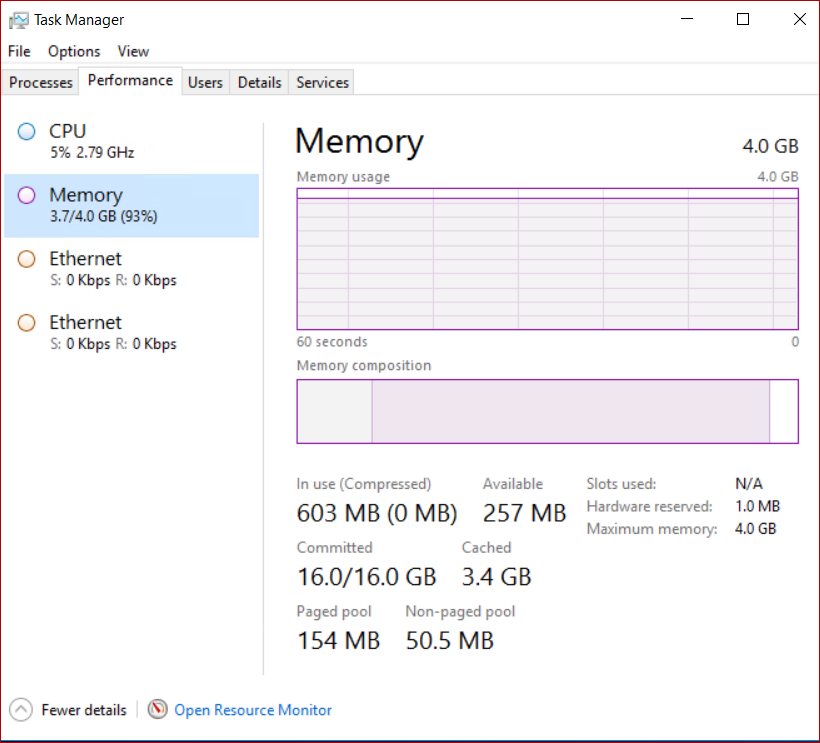What Is Pagefile.sys Used For In Windows
This browser is no longer supported.
Upgrade to Microsoft Edge to have reward of the latest features, security updates, and technical back up.
Introduction to page files
A folio file (also known equally a "paging file") is an optional, hidden organisation file on a hard disk.
Functionality
Page files accept the following functionalities.
Concrete extension of RAM
Page files enable the system to remove infrequently accessed modified pages from concrete retentivity to let the organization use physical retention more efficiently for more frequently accessed pages.
Application requirements
Some products or services require a page file for various reasons. For specific information, cheque the product documentation.
For instance, the post-obit Windows servers crave folio files:
- Windows Server domain controllers (DCs)
- DFS Replication (DFS-R) servers
- Certificate servers
- ADAM/LDS servers
This is because the algorithm of the database cache for Extensible Storage Engine (ESENT, or ESE for Microsoft Exchange Server) depends on the "\Memory\Transition Pages RePurposed/sec" performance monitor counter. A page file is required to brand sure that the database cache tin release memory if other services or applications asking memory.
For Windows Server 2012 Hyper-V and Windows Server 2012 R2 Hyper-V, the page file of the direction OS (commonly chosen the host OS) should exist left at the default of setting of "System Managed".
Back up for system crash dumps
Page files can be used to "back" (or support) system crash dumps and extend how much arrangement-committed retention (too known equally "virtual memory") a system tin can support.
For more than information about system crash dumps, see organization crash dump options.
Page files in Windows with large physical retention
When big physical memory is installed, a page file might non be required to support the system commit charge during peak usage. For example, 64-chip versions of Windows and Windows Server support more physical memory (RAM) than 32-bit versions support. The available concrete memory alone might exist large enough.
Withal, the reason to configure the page file size hasn't inverse. It has always been about supporting a organization crash dump, if it's necessary, or extending the system commit limit, if it'southward necessary. For example, when a lot of physical retentiveness is installed, a page file might not be required to dorsum the system commit charge during meridian usage. The bachelor physical retentivity alone might be large enough to do this. However, a folio file or a dedicated dump file might withal be required to back a system crash dump.
Organization committed memory
Folio files extend how much "committed retentiveness" (also known equally "virtual memory") is used to store modified data.
The system commit retentiveness limit is the sum of physical memory and all page files combined. It represents the maximum system-committed retentiveness (as well known as the "arrangement commit charge") that the system tin can support.

The system commit accuse is the full committed or "promised" retentivity of all committed virtual memory in the system. If the organization commit charge reaches the system commit limit, the arrangement and processes might not get committed memory. This status tin cause freezing, crashing, and other malfunctions. Therefore, make certain that you set the system commit limit high enough to support the system commit charge during peak usage.


The system committed charge and system committed limit tin be measured on the Performance tab in Task Manager or by using the "\Memory\Committed Bytes" and "\Memory\Commit Limit" performance counters. The \Memory% Committed Bytes In Use counter is a ratio of \Memory\Committed Bytes to \Memory\Commit Limit values.
Note
System-managed folio files automatically grow up to three times the concrete memory or 4 GB (whichever is larger, just no more than one-eighth of the volume size) when the system commit charge reaches ninety percent of the organisation commit limit. This assumes that enough free disk space is bachelor to accommodate the growth.
Feedback
Submit and view feedback for
What Is Pagefile.sys Used For In Windows,
Source: https://docs.microsoft.com/en-us/windows/client-management/introduction-page-file
Posted by: macksorece.blogspot.com


0 Response to "What Is Pagefile.sys Used For In Windows"
Post a Comment